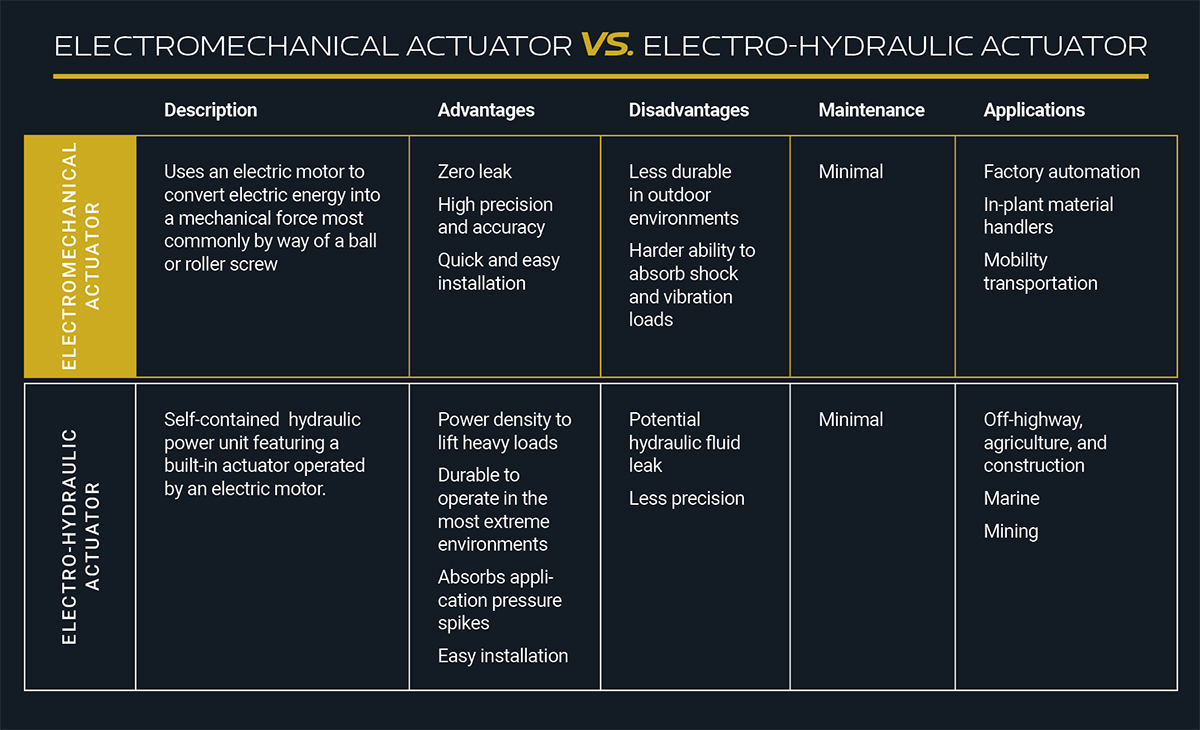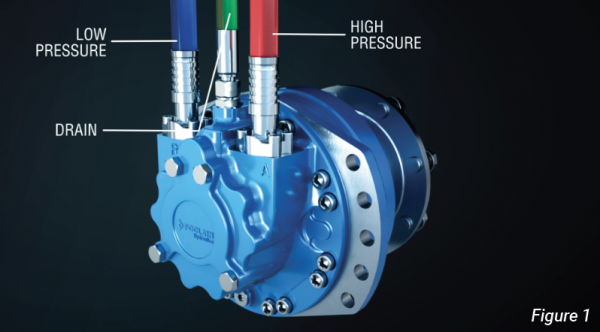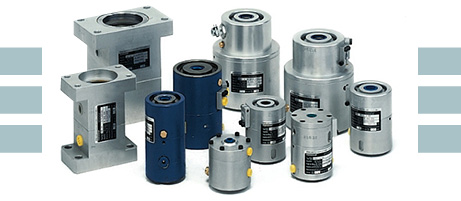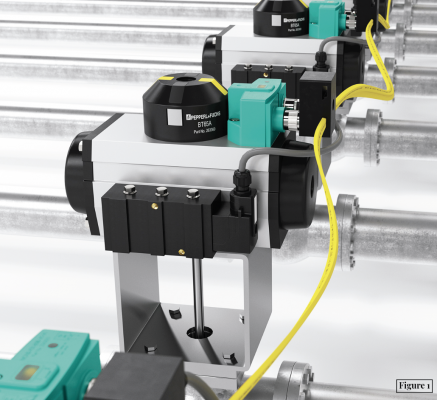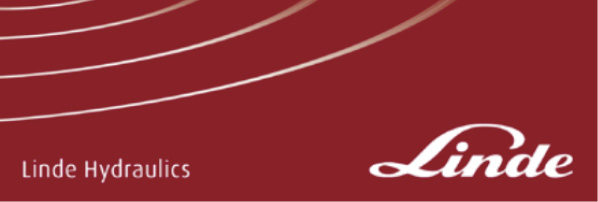The Enduring Benefits of Electro-Hydraulic Linear Actuators in an Electrified World
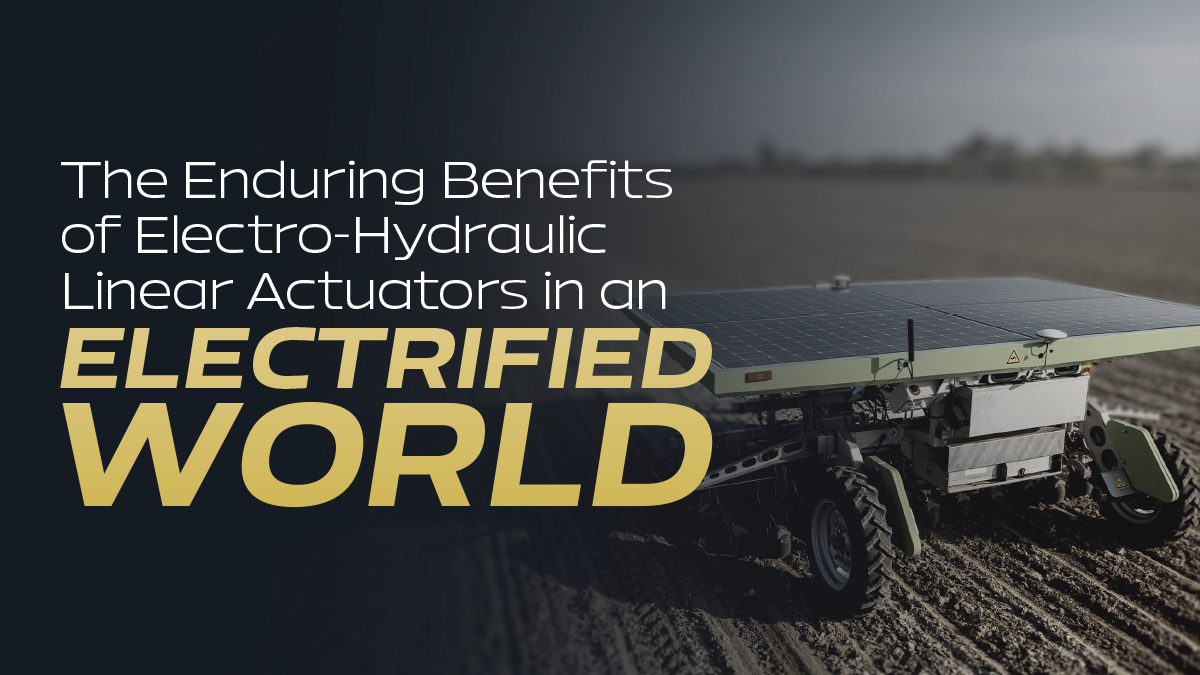
By Erik Larson, Business Development Manager, Parker Hannifin.
OEMs are increasingly interested in adapting their products to a more electrified world. New technologies have flooded the market claiming they are the best fit in the up-and-coming electrified world. One prime example is the electromechanical actuator, also known as an EMA. EMAs offer numerous advantages and are well-positioned for certain linear applications. In many instances though, they are not the best solution. An existing technology, the electro-hydraulic linear actuator (EHA), continues to have a very important role in the market and the new electrified world.
Definition of a Linear Actuator and the Most Common Forms
A linear actuator is a device designed to move a load between two points in a straight line. There are many combinations available to meet a wide range of speed, power, and load requirements. These actuators come with multiple standard features and numerous add-on options, including limit switches, position feedback, and other features to ensure they can fit a variety of applications. Linear actuators function via a variety of technologies. Electromechanical and electro-hydraulic are most used technologies in applications that reduce environmental impact, compact envelopes, and minimal assembly costs.
An EHA is a fully self-contained system that uses an electric motor to drive a hydraulic pump to extend or retract a hydraulic cylinder. Electrical wiring, compared to an external hydraulic supply, provides power and EHA commands. In contrast, an EMA does not use hydraulics. It is powered exclusively by motors using a toothed belt or a ball, lead, or planetary roller screw to convert the rotational force of a rotary electric motor into linear movement.
Key Differences Between EHAs & EMAs
Pros and Cons
EHAs
Designed for maximum reliability and minimal maintenance, EHAs feature a closed housing that prevents contamination, moisture, and air infiltration. Linear bearings provide extra support during rod extension. Pressure relief valves provide safety to hydraulic components. EHAs are preferred in a number of applications due to their ability to handle heavy loads with their compact envelopes.
Known as the most powerful type of actuator on the market, EHAs are very easy to command even from a far distance from the application. They can be controlled both wired and wirelessly. Due to their incompressible fluid and check valves, EHAs can hold constant loads without the motor in operation.
The most significant obstacle with an EHA is that it contains hydraulic fluid, which can leak. This causes the contamination of nearby equipment, products, and the environment. However, EHA leaks are a rare occurrence due to advances in EHA seal technology and overall design resilience. Most hydraulic systems leak from hose and fitting connections which EHAs do not have. Depending on the application, another consideration when deciding between an EHA and an EMA is the EHA’s level of accuracy. EHAs are less precise than EMAs, so applications requiring a high level of accuracy are not ideal for an EHA.
EMAs
The most advantageous feature of an EMA is its leak-free quality. This means no product, equipment, or environmental contamination, as well as less maintenance. This yields reduced costs and greater productivity. Precise operations are another key benefit, leading to repeatable actions with easy, automatic operation controls. Simple wiring leads to quick and easy installations. Additionally, there is no need for external pumps or motors since EMAs are smaller, thus taking up less space.
Having said that, there are several limitations to consider. Since EMAs are less durable than EHAs, they do not perform optimally in outdoor applications. A corrosive environment and uneven terrain that is common in many off-road applications can create problems for EMAs, which do not handle moisture, shock, or vibration as well as EHAs. As a result, EMAs are primarily utilized for in-plant settings where they are housed in a climate-controlled environment. Additional limitations to consider are an application’s extend and retract forces. If the force required in an application is relatively higher, both the speed and life expectancy of an EMA decrease significantly.
Past Performance & Future Opportunities
Hydraulic technology has been used effectively in off-road machinery for decades. This is due to its proven performance in rugged environments with robust potential for shock, vibration, dust, water, corrosive chemicals, and other potential hazards. Hydraulic actuators have historically enjoyed a lead in power density over EMAs, which enhances their performance in the most demanding applications.
Recent advancements in EMA design have captured headlines and interest in recent years. Key to their popularity is an increased market focus on zero-leak initiatives that are vital in industries such as food manufacturing where contamination is a concern. There are also other industries concerned about the environmental impact of hydraulic fluid. Improvements in longevity, control, stroke length, and force capacity have also increased their popularity.
Despite their popularity, EMAs are not suited for all applications. They are ideal for plant settings where their tight tolerance for position sensing and precision operation are more critical. EMAs have faced roadblocks to gaining market share in the off-road industry because of their inherent design, which makes them less durable than EHAs. They are more susceptible to shock loads and vibration; such damage may cause side loading and possible shearing of the rod screw. That rules out applications requiring movement over uneven surfaces such as stumps, rocks, and other hazards that could cause possible shock loads on the EMA.
Some manufacturers address this concern by adding dampeners to the EMAs to improve shock absorption. Despite these enhancements, EMAs remain inferior to EHAs for many applications. This is why EHAs are often the product of choice in mobile equipment industries including construction and agriculture. These areas are known for their harsh environments including uneven/rugged terrain, rain, and humidity, all environmental factors that compromise an EMA’s performance. Finally, there have been instances in which the specifier has been attracted by positive press to install an EMA, only to learn that it breaks quickly. This happens due to the duty cycle of the application being greater than it was initially designed for, or greater than the environment in which the application is in.
Considerations When Choosing the Right Actuator
Not all EHAs and EMAs perform in the same manner. It’s important to evaluate multiple considerations when choosing the right EHA or EMA for an application. Considerations such as force, speed, power, envelope size, etc. should all be factored in to help size an actuator so that it draws the lowest electrical current while providing optimal performance.
As previously mentioned, determining the level of potential vibration and shock loads in a particular application also helps determine what type of linear actuator to choose. Other environmental factors such as the potential ambient temperature of the application, a possible corrosive environment, or the potential for the actuator to be pressure washed or submerged under water are all factors that should be considered.
Force is a critical consideration in choosing the right actuator for an application. For low-force applications, especially under 2000 lbf, ball screw EMAs are preferable due to their ability to extend and retract quickly with a long life expectancy. As the extending and retracting force required in an application increases, EMAs’ performance degrades. Both the EMA speed and life expectancy decrease greatly. EHAs, in comparison, are advantageous at higher force requirements because of their inherent higher-power density due to hydraulic fluid power. It is always important to review catalog information to determine which factors are most critical to the application.
Evolution of EHAs
In recent years, EHAs have benefitted from numerous improvements that make them more competitive and attractive. A noticeable change is the incorporation of Controller Area Network (CAN) bus into EHAs, making them smarter, more efficient, and more user interactive. It is now possible to not only control actuation speed, but determine actuator position using advancing and existing technologies such as LVDTs and non-contact sensors. This offers users the ability to fully command every aspect of the EHA from basic on/off inputs to complete absolute positioning PID loops. EHAs can also have multiple built-in sensors to monitor motor winding temperature, motor RPM, and amp draw to offer users complete visibility and key diagnostic data.
These controllers can be assembled directly onto the motor, which has begun to transition from brushed motors to much more efficient and longer-lasting brushless motors. The greater control, life expectancy, and efficiency is a significant boost to potential productivity, which means longer work uptime. This is especially critical in the push towards electrification where higher efficiency and lower power options are vital to keep battery-operated machines running.
Choosing the Right Supplier
There are many manufacturers of both EHAs and EMAs. Any chosen partner must have sufficient technical knowledge of multiple solutions and alternatives. For example, if neither option is the optimal solution for a potential application, it is important to consider working with a partner that can offer other solutions that are designed for the up-and-coming electrified world. An example might be an ePTO or ePump, which may be a better fit for a particular application. Parker, for example, uses special algorithms to calculate the tradeoff between power consumption and speed to help identify the best solution for your application.
Conclusion
The market is experiencing a shift in thinking. Those who recently favored EMAs are reconsidering the benefits of improved, power-dense, and intelligent EHAs. Owners and operators are prioritizing power, speed, and durability which leads them to ultimately choose an EHA, thus helping to cement their place in hybrid environments.
Among their other attributes, EHAs are easy to install using a plug & play design. Technology advancements have enabled EHAs to meet current and future market needs, including the need to adhere to SAE J939, CANOpen, and other industry requirements. This positions EHAs well for both the hybrid and the future electrified world.

